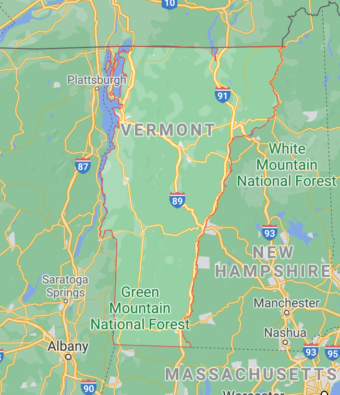Communication Union Districts, or CUDs, are springing up all over Vermont as residents lobby for adequate broadband. According to Vermont Digger, 20 to 25 percent of the people in that state lack functional connectivity. By banding together, rural communities are working on plans that would bring broadband to all residents of Vermont, including those in sparsely occupied areas. (see map)
Although the state government of Vermont has said that its goal is to have everyone online by 2024, the practical concerns that would extend coverage to remote areas mean that many remain unconnected. Residents like Marlboro’s Steven Johns explained that even areas that supposedly have broadband operate at such low speeds that he and others must drive to the nearest hotspot to link in. Seeking to address the issue, Johns helped form the Deerfield Valley Communication Union District (DV CUD) and serves as its vice chair.
“People who are telecommuting, working from home, they can’t survive on this kind of bandwidth,” said Johns, who said he wants to see statewide broadband access for all “regardless of economic means.” Underlining the point, VT Digger noted that the interview with Johns was conducted on a crackling landline because Johns has no cell phone connection at home.
Governor Phil Scott has proposed a $20 million broadband investment as part of his budget plans. “What the governor has put forward is a really helpful place to start,” stated Representative Tim Briglin, “But “I’m hopeful we can do more than that.” Briglin added that funds from the federal government would be needed to extend service to outlying areas that are not profitable for private businesses.
“We are putting our heads down and trying to plow ahead to solve an issue that this state has had for a couple of decades now,” said Briglin. “This service is absolutely required to operate, not just in the pandemic, but in the modern world. People are educating themselves from home, people are accessing health care from home, people are working from home. You have to have broadband service.”
“I don’t know what the solution is,” said Scott Tucker, Wilmington Town Manager and member of the Deerfield Valley CUD told the Vermont Digger, “Usually, it’s money.”
Steven Johns agreed, saying that according to the DV CUD feasibility study and business plan, it would take an investment of approximately $3 million per town for broadband outreach. There are 20 towns in the DV CUD, bringing the total cost as high as $50 million. He estimated that it would cost Vermont a “couple of hundred million” to blanket the state.
So far, only two of the eleven CUDs provide internet services. By joining forces, the remaining CUDs plan to take advantage of a state law that will allow them to operate as a unit that will attract the resources needed to stitch up the digital divide in their state.





Reader Interactions